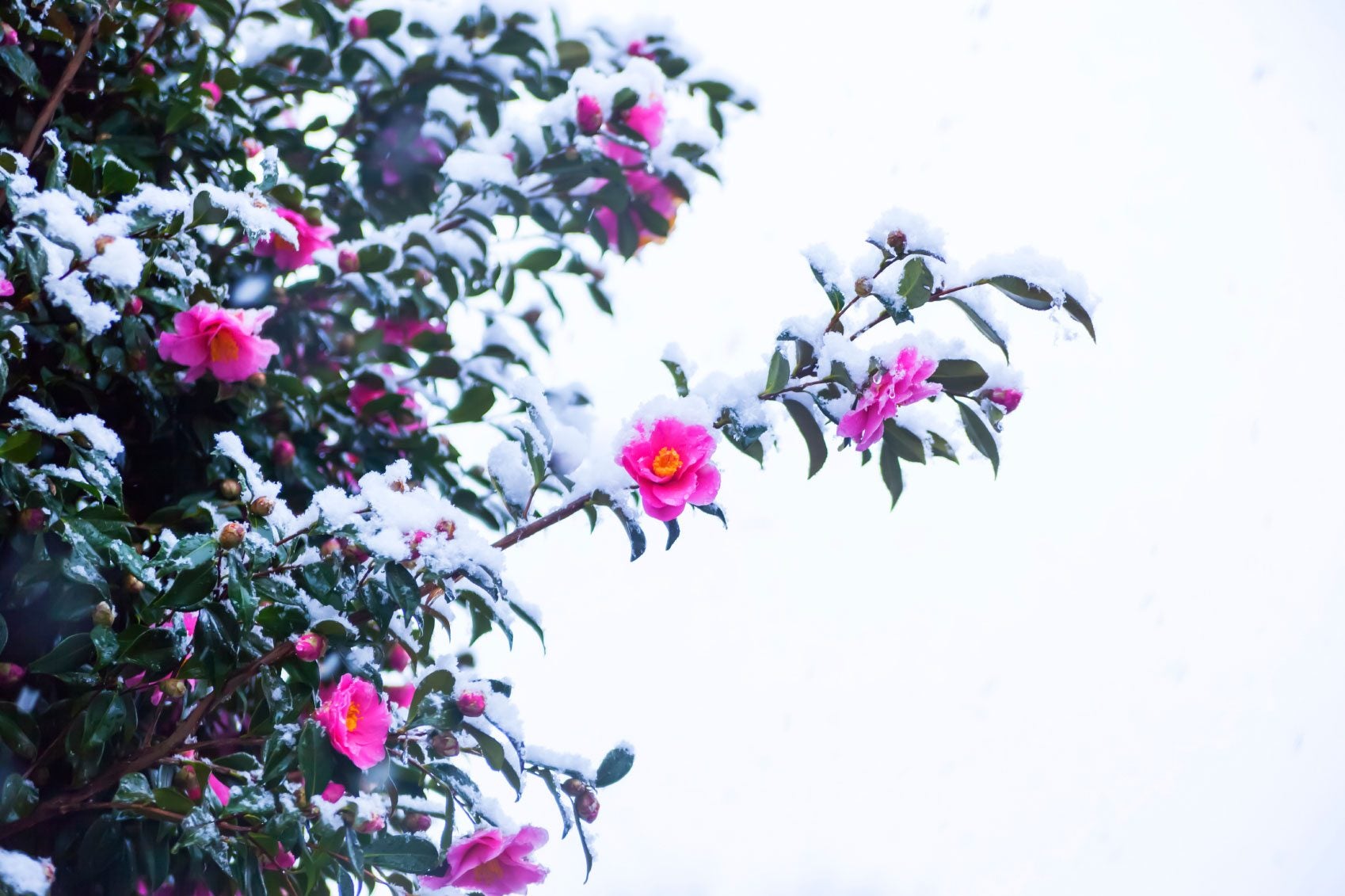Camellia Cold Damage: Learn About Winter Protection For Camellias
Camellias are tough, but a deep winter chill and too much cold wind can cause damage. Choosing a hardy plant can help avoid the ravages of winter.


Camellia Cold Tolerance - Tips For Treating Cold Damage In Camellia Shrubs
The camellia is a tough, durable plant, but it isn't always hardy enough to tolerate the deep chill and harsh winds of winter. If your plant looks a little worse for wear by the time spring rolls around, you may be able to bring it back to radiant health.
Camellia cold tolerance is fairly high, especially if the plants are sheltered from cold winds. Hopefully, the weather will provide a few chilly spells to toughen up the plant before the weather does its worst.
Winter Protection for Camellias
Water your camellia plant thoroughly before the first hard freeze. Be sure to saturate its root zone because moist soil will protect the roots. Otherwise, water evaporates through the leaves throughout the winter and the lost moisture isn't replaced when the ground is frozen.
Mulch the ground around the plant after the ground is cold but before the first hard freeze. Use an organic mulch such as pine needles, straw, dry grass, or bark chips. Don't use leaves unless you chop them first; whole leaves tend to form wet, dense mats that can smother the plant.
Treating Cold Damage in Camellias
Brown or dry spots on the leaves may indicate winter injury of camellia, known as winter burn. Camellias exposed to cold wind are susceptible to winter burn, especially on the south side of the plant. The problem is compounded if the snow reflects light.
There isn't too much you can do at this point, and the camellia may rebound and replace its lost growth by spring or early summer.
An application of fertilizer for acid-loving plants will give the plant a boost.
Sign up for the Gardening Know How newsletter today and receive a free copy of our e-book "How to Grow Delicious Tomatoes".
If the plant displays dead or damaged growth, remove the damaged parts in late winter or early spring. Prune the camellia's branches to the point where they join another branch, but don't damage the ridged area where the one branch joins another; you may make the plant more susceptible to pests and disease. Some varieties are best pruned in fall and pruning in spring may remove burgeoning flower buds. If this is the case, prune only enough to remove camellia cold damage, then prune the camellia thoroughly later in the season.
Preventing Camellia Cold Damage
The best way to prevent camellia cold damage is to start with a healthy, disease-resistant plant that is mature enough to have a well-developed root system.
Some varieties are hardier than others and all camellias are not created equal. The best bet is to obtain a plant from a reputable nursery in your area; they can advise you regarding the best varieties for your climate.

A Credentialed Garden Writer, Mary H. Dyer was with Gardening Know How in the very beginning, publishing articles as early as 2007.